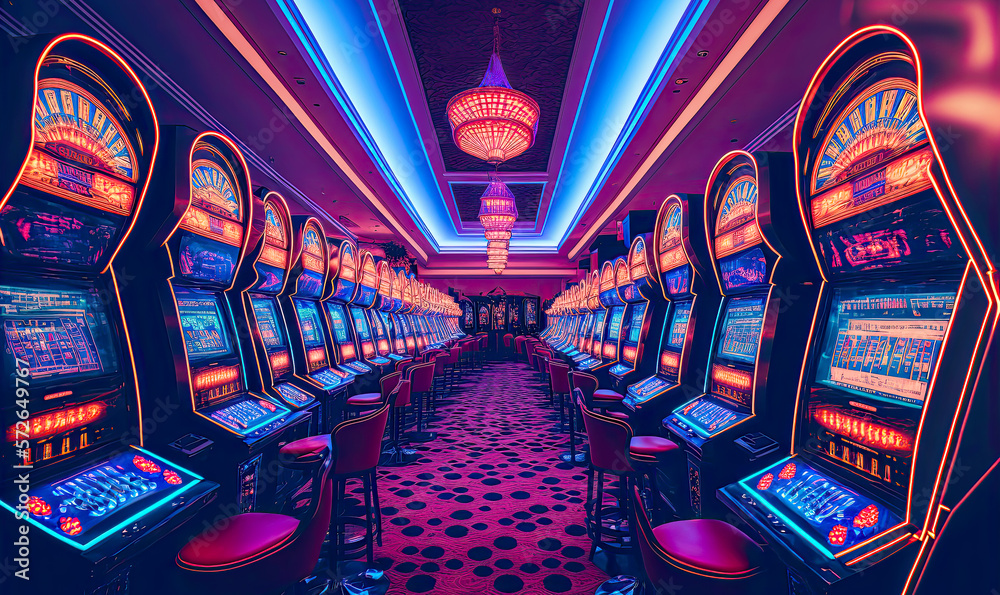
Within a dynamic and thrilling world of gaming establishments, wherein fortune and strategy intertwine, hues and design play a key role in attracting players. As soon as players step inside a casino or log into a gaming website, they are enveloped in a visual feast that grabs their attention and lures them to explore further. Bright colors, engaging graphics, and innovative layouts are meticulously crafted to create an atmosphere of excitement and anticipation, ultimately enhancing the gaming encounter.
As gamblers move through the ever-changing landscape of casino games, they come across a range of designs that not only serve visual purposes but also influence feelings and choices. Colors like scarlet and gold symbolize wealth and luck, while calm navy and emeralds can create a more tranquil environment. Grasping how these elements work together enables casinos to create an inviting and energizing atmosphere that encourages players to interact with the games, invest additional time at the tables, and increase their general enjoyment.
The Science of Color in Gaming Establishments
Tint plays a critical role in the creation of gaming experiences, influencing players’ feelings and actions. Lively and bold shades, such as scarlet and amber, are often used to ignite excitement and draw notice. These hues create a feeling pressure and energy, encouraging gamblers to participate more enthusiastically with the activity. By thoughtfully selecting colors, designers aim to inspire emotions of pleasure and excitement, which can enhance the total gaming experience.
Various shades also have psychological connotations that can influence how gamblers perceive their possibilities of winning. Tải App 78Win For case, green is frequently associated with luck and prosperity, making it a frequent choice in activities like roulette and poker setups. This connection can result players to feel more positive and self-assured in their play, ultimately encouraging them to bet more. Understanding these associations allows game developers to create environments that enhance player happiness and engagement.
Furthermore, the design of gambling game interfaces often utilizes gradients and opposing shades to instruct player actions. For example, winning combinations may be emphasized with bright, opposing colors, creating a visual reward. This method supports favorable outcomes and promotes repeated participation. By exploiting color psychology, casinos can create activities that not only draw gamblers but also hold them involved and invested in their play experience.
Design Elements that Engage Players
The visual appeal of casino games is primarily influenced by the implementation of bold colors. Lively and striking colors are deliberately chosen to create an appealing atmosphere that grabs attention. For instance, crimson and golds often signify luck and prosperity, which is why they are common in the palettes of gaming machines and game surfaces. These colors not only attract players in, but they also stir emotions associated with excitement and expectation, enhancing the overall gaming experience.
In parallel to color, the aesthetic and layout of gambling games play a significant role in captivating players. Games are designed to be intuitive, ensuring that players can easily understand the guidelines and mechanics. User-friendly interfaces, along with engaging graphics and animations, help maintain player interest and promote extended play sessions. The physical elements, such as the feel of the controls and the sounds of the games, also add to a comprehensive sensory experience that keeps players engaged.
Finally, thematic elements in game design can greatly influence gaming decisions. Many casino games are inspired by media, fairy tales, or exploration motifs, featuring symbols and characters that resonate with players. These themes create a sense of immersion and connection, making each game feel unique. When players feel a connection to the concept, they are more likely to opt for that game over others, leading to higher participation and enthusiasm within the gambling environment.
Case Studies: Notable Gambling Game Designs
One noteworthy example of successful gambling game design is the popular slot machine series themed around popular movies. Games such as those based on the Wizard of Oz and Game of Thrones utilize vibrant colors and high-quality graphics to enthrall players in recognizable narratives. The employment of moving visuals and captivating sound effects grabs the focus of players, building an affective connection to the theme. This approach not only fosters longer play but also improves the overall gaming experience, yielding increased player retention.
Another successful case is the use of color psychology in table games like blackjack and roulette. 78WIN Casinos often design these games with dark reds and greens, colors traditionally associated with luck and wealth. For instance, the emerald felt on a blackjack table provides a relaxing effect, while the red accents in the wheel invite excitement. This intentional use of color helps to create an inviting atmosphere that stimulates players to engage, fulfilling their psychological impulses and boosting their enjoyment.
Finally, social casino games that incorporate social features and lively, dynamic designs have seen remarkable success in engaging players. Games like Zynga’s Poker and Slotomania leverage bright colors and playful animations to create an inviting online environment. The integration of leaderboards, social sharing options, and in-game rewards fosters competition and community, drawing players in for longer sessions. Such designs merely make the games visually appealing but also emphasize social interaction, a vital factor in player retention and engagement within digital casino environments.
